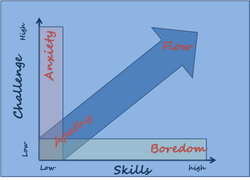
To begin with, let's be clear about what is not the role of the Chair. The Chair of the Board is not responsible for the functioning of the school, nor is she or he personally responsible for the performance of the Principal. As we have previously discussed, it is the responsibility of the entire Board to oversee the performance of the Head and the functioning of the school. If the Chair presumes to represent the Board to the Head and administration, then she/he is either acting unnecessarily, or is abusing her/his authority. A Head who is obliged to acquiesce to what the Chair demands is either working for the Chair alone, or working for both the Board and the Chair. Neither situation is appropriate.
If the Principal is the CEO (Chief Executive Officer) of the school's operations, then the Chair, as John Carver puts it, is the CGO (Chief Governance Officer). In that role, the Chair is responsible for the functioning of the Board and is responsible for the "integrity of the Board process". In this, the Chair must work in partnership with all Board members to keep things functioning smoothly. The Chair and all Board members are trustees for the "ownership" of the school. Therefore, they collectively bear responsibility for the integrity of the governance process. The worst mistake that a Head can make, (and I have been guilty of doing this myself with disastrous results), is to assume that the Chair is an effective conduit of information in both directions. Head/Chair/Board/Chair/Head communications is often one of the most glaring examples of "broken telephone" that you can imagine!
So what are the five basic principles that should govern the relationship among the Chair, the Head, and the Board?
1. The Chair keeps the Board on track, and the Head keeps the school on track.
If the Head leaves governance issues to the Chair, then she/he should leave operational issues to the Head!
2. Both the Chair (Board) and the Head must make the Mission and the welfare of the school their first priority.
3. The Chair and the Head must both see their role as a collaborative professional partnership. They should not be seen as either adversaries or "lovers".
Nothing undercuts the credibility of either the Head or the Chair than the perception that they are either at each other's throats or in bed together. Either way, people second guess every decision. The relationship between the Chair and the Head should never interfere with the relationship between the Head and the Board. Both the Chair and the Head are responsible to the entire Board, not to each other.
4. No surprises!
The Chair should hear important news from the Head first, not the media, parents, or other Board members. By the same token, the Head should hear about political or performance issues at the Board from the Chair first and not be blindsided at a meeting.
5. Confidence and Confidentiality
The partners should exude confidence in one another and keep all concerns, misgivings and disagreements in confidence. You hang together, or you hang separately!
If the Chair cannot work effectively with the Head, then the Chair should step down gracefully and if there is a performance issue with respect to the Head, that is the purview of the Board to handle, not the Chair.
I have worked with some great Chairs, but from time to time, every one of them has decided to "go it alone" in handling a concern or issue. Every time a Chair makes this decision, it drives a wedge between the Head and the Board. No matter how sensitive or explosive an issue is, it has to be aired in front of the entire Board, or the effective governance of the school is at risk




 RSS Feed
RSS Feed